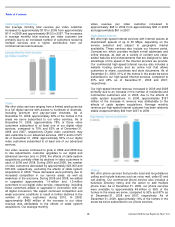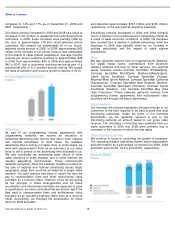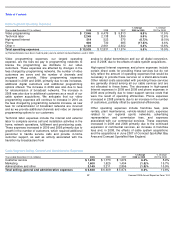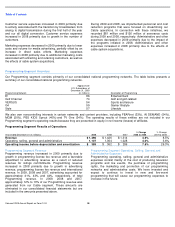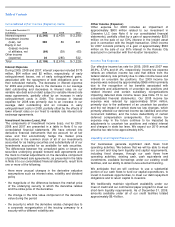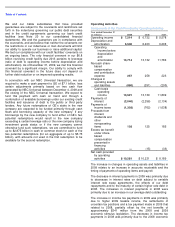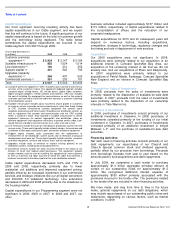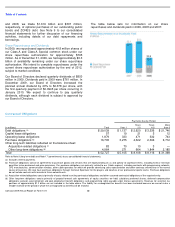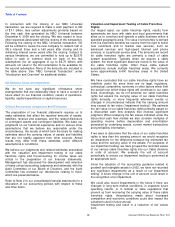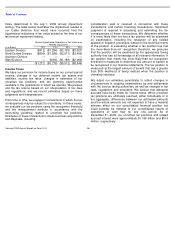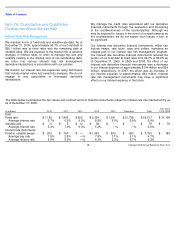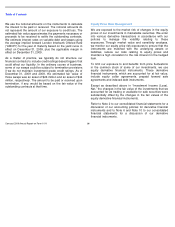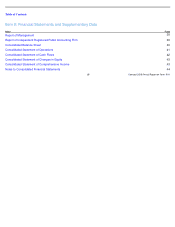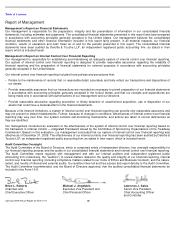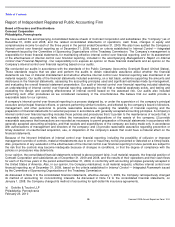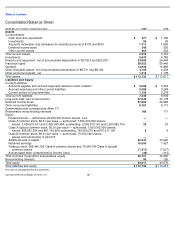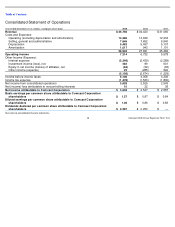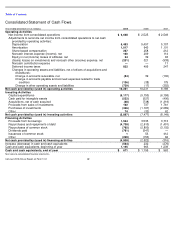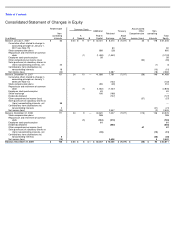Comcast 2009 Annual Report Download - page 41
Download and view the complete annual report
Please find page 41 of the 2009 Comcast annual report below. You can navigate through the pages in the report by either clicking on the pages listed below, or by using the keyword search tool below to find specific information within the annual report.
Table of Contents
33
Comcast 2009 Annual Report on Form 10-
K
In connection with the closing of our NBC Universal
transaction, we are required to make a cash payment to GE
of $7.1 billion, less certain adjustments primarily based on
the free cash flow generated by NBC Universal between
December 4, 2009 and the closing. We also expect to incur
other expenses associated with the closing of the transaction.
Following the closing of the NBC Universal transaction, GE
will be entitled to cause the new company to redeem half of
GE’s interest three and a half years after closing and its
remaining interest seven years after the closing. Subject to
various limitations, we are committed to fund up to $2.875
billion in cash or common stock for each of the two
redemptions (for an aggregate of up to $5.75 billion) with
amounts not used in the first redemption to be available for
the second redemption. None of the amounts are included in
the table above. See “NBC Universal Transaction” under
“Introduction and Overview” for additional details.
Off-Balance Sheet Arrangements
We do not have any significant off-balance sheet
arrangements that are reasonably likely to have a current or
future effect on our financial condition, results of operations,
liquidity, capital expenditures or capital resources.
Critical Accounting Judgments and Estimates
The preparation of our financial statements requires us to
make estimates that affect the reported amounts of assets,
liabilities, revenue and expenses, and the related disclosure
of contingent assets and contingent liabilities. We base our
judgments on our historical experience and on various other
assumptions that we believe are reasonable under the
circumstances, the results of which form the basis for making
estimates about the carrying values of assets and liabilities
that are not readily apparent from other sources. Actual
results may differ from these estimates under different
assumptions or conditions.
We believe our judgments and related estimates associated
with the valuation and impairment testing of our cable
franchise rights and the accounting for income taxes are
critical in the preparation of our financial statements.
Management has discussed the development and selection
of these critical accounting judgments and estimates with the
Audit Committee of our Board of Directors, and the Audit
Committee has reviewed our disclosures relating to them,
which are presented below.
Refer to Note 2 to our consolidated financial statements for a
discussion of our accounting policies with respect to these
and other items.
Valuation and Impairment Testing of Cable Franchise
Rights
Our largest asset, our cable franchise rights, results from
agreements we have with state and local governments that
allow us to construct and operate a cable business within a
specified geographic area. The value of a franchise is derived
from the economic benefits we receive from the right to solicit
new customers and to market new services, such as
advanced services and high-speed Internet and phone
services, in a particular service area. The amounts we record
for cable franchise rights are primarily a result of cable
system acquisitions. Typically when we acquire a cable
system, the most significant asset we record is the value of
the cable franchise rights. Often these cable system
acquisitions include multiple franchise areas. We currently
serve approximately 6,400 franchise areas in the United
States.
We have concluded that our cable franchise rights have an
indefinite useful life since there are no legal, regulatory,
contractual, competitive, economic or other factors which limit
the period over which these rights will contribute to our cash
flows. Accordingly, we do not amortize our cable franchise
rights but assess the carrying value of our cable franchise
rights annually, or more frequently whenever events or
changes in circumstances indicate that the carrying amount
may exceed its fair value (“impairment testing”). We estimate
the fair value of our cable franchise rights primarily based on
a discounted cash flow analysis that involves significant
judgment. When analyzing the fair values indicated under the
discounted cash flow models we also consider multiples of
operating income before depreciation and amortization
generated by underlying assets, current market transactions
and profitability information.
If we were to determine that the value of our cable franchise
rights is less than the carrying amount, we would recognize
an impairment for the difference between the estimated fair
value and the carrying value of the assets. For purposes of
our impairment testing, we have grouped the recorded values
of our various cable franchise rights into our Cable divisions
or units of account. We evaluate the unit of account
periodically to ensure our impairment testing is performed at
an appropriate level.
Since the adoption of the accounting guidance related to
goodwill and intangible assets in 2002, we have not recorded
any significant impairments as a result of our impairment
testing. A future change in the unit of account could result in
the recognition of an impairment.
We could also record impairments in the future if there are
changes in long-term market conditions, in expected future
operating results, or in federal or state regulations that
prevent us from recovering the carrying value of these cable
franchise rights. Assumptions made about increased
competition and economic conditions could also impact the
valuations used in future annual
impairment testing and result in a reduction of fair values
from


